Ecuador is a country with many different climates. In the highlands of Quito or Cuenca, it can be cold and rainy – and the air is thinner. While in the tropical Amazon jungle it’s generally hot and humid (think mosquitos). At the same time, the coastal region provides a very sunny climate. Thanks to these diverse weather patterns, there is a large variety of exotic fruit to sample.
Contents
Taxo
Taxo is also known as Banana-Passionfruit in English speaking countries, and as Tumbo in Peru. It’s one of the cheapest fruits to buy per kilo in Ecuador. To describe: Taxo looks like a small banana, but once you open it up (quite easy to do with your fingernails), its 80 to 90% similar to a passionfruit. The taste is pleasant and mildly sweet – without the bitterness you often encounter in some passionfruits. Pack it in for a picnic, or eat it on-the-go.
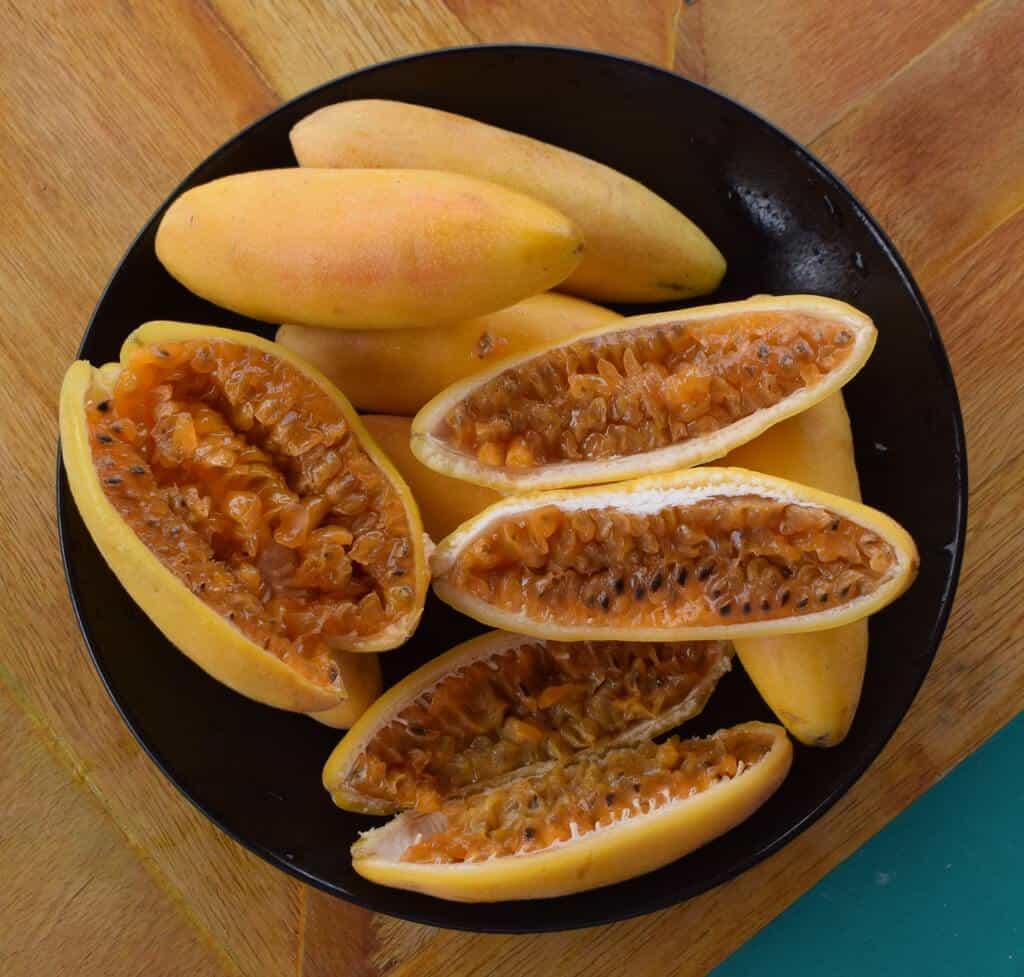
Achotillo
Achotillo is better known as Rambutan (the hairy fruit) in South-East Asian countries like Malaysia. It’s also family of lychee fruit, to be found in places like South Africa.
Ecuador’s Achotillo white sweet flesh seemed tougher and less easily edible than the Rambutans I ate in Asia. The flesh clings more to the large seed inside. Thus, not being a fan, I disposed of it. But it was cheap.
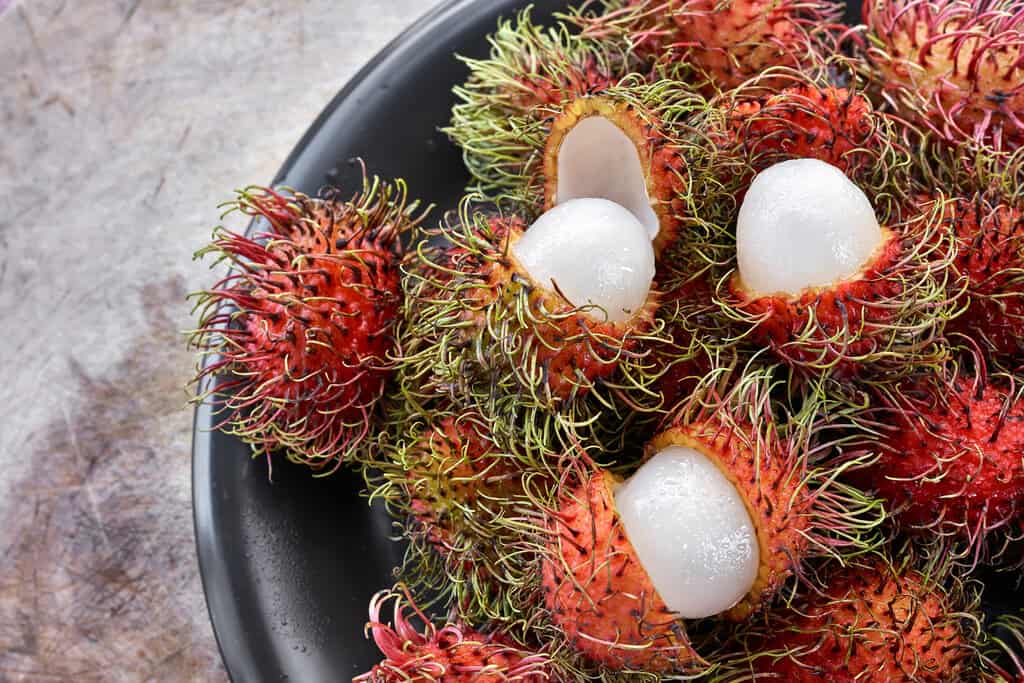
Ice Cream Bean
This is a very strange, quite outlandish bean. The inner white flesh does taste a little like ice cream (but of course the texture is different). You have to chew and suck carefully around the large black beans to eat the soft white flesh. It has a nice taste, but at the same time, is definitely not that easy to eat. I paid $1 for a large bag full of these beans in Quito. So it’s cheap – but quite hard to find outside of Ecuador’s capital. Locally, this fruit is known as “la Guaba”.
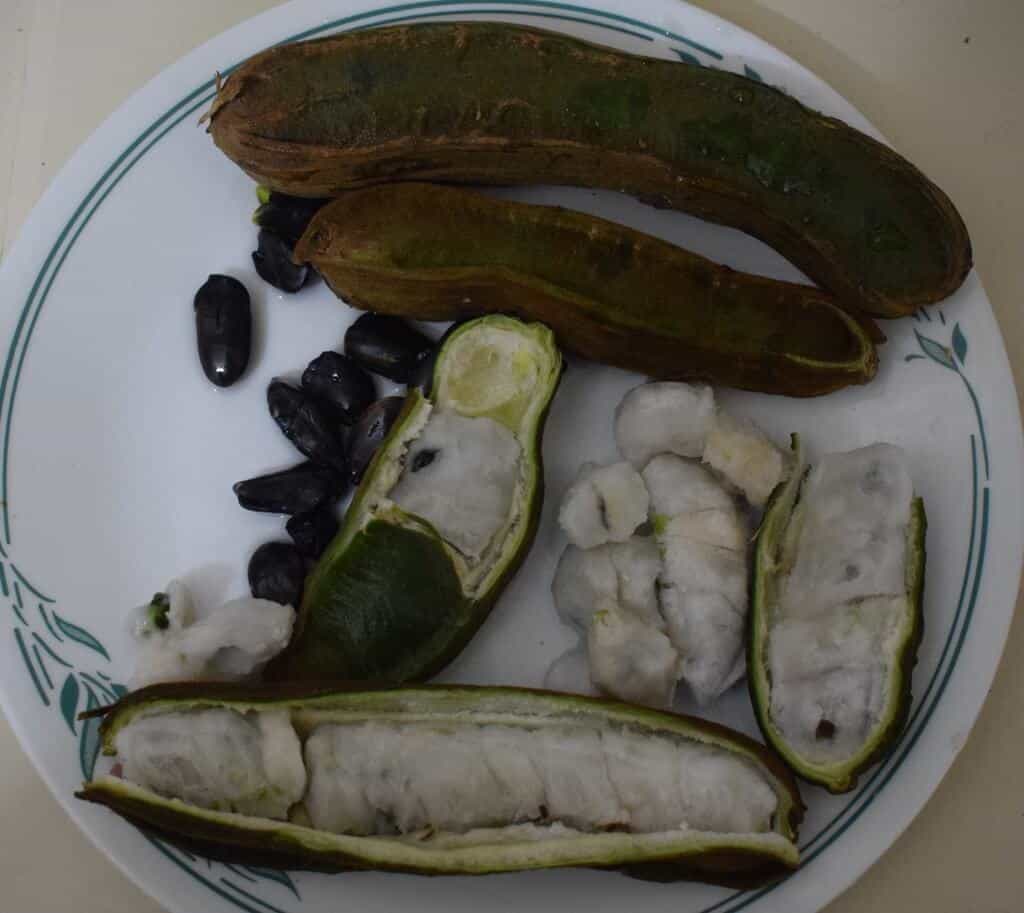
Feijoa
Feijoa – a name reminding of Brazilian bean stew – is actually a small green fruit with sweet flesh. It tastes a little like candy: Perhaps the flavor is similar to sour worms or sherbet. Eat the yellow-white flesh, not the skin. The texture resembles the pink flesh of the Guava fruit. Thus it’s no surprise that Feijoa is also known as “Pineapple-guava”.
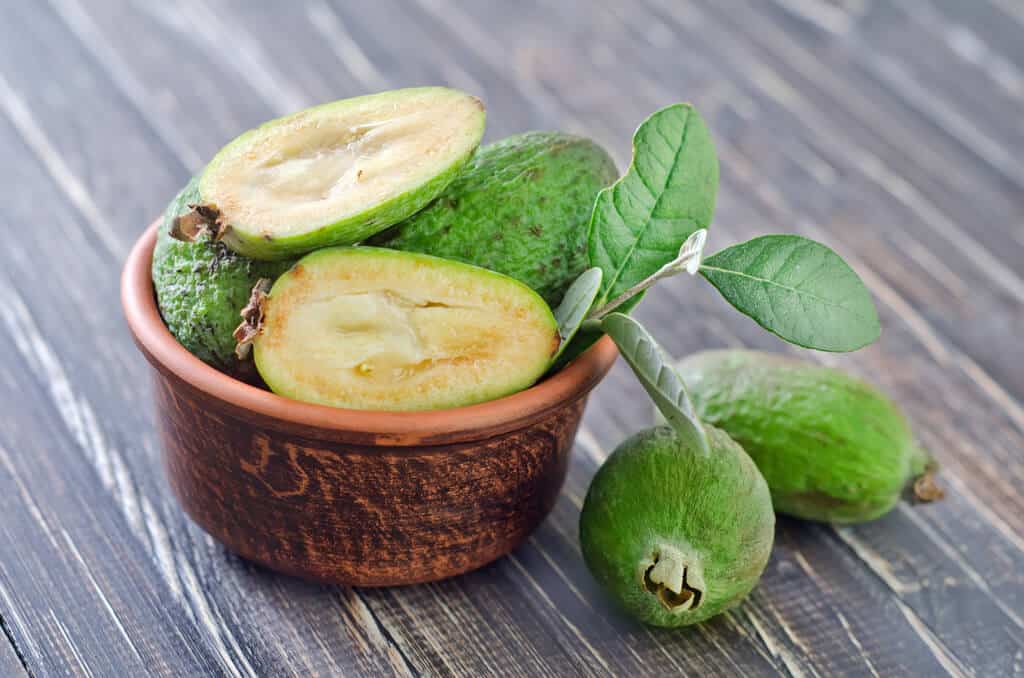
Tomate de Arbol
Tomate de Arbol (“Tree Tomato”), tastes like a tomato fruit, as opposed to a tomato vegetable. It’s only a little sweet, but very edible. Also, less bitter than the regular tomato. The taste could also be described as a tomato-mango or tomato-peach cross. The skin is tough, thus cut it in quarters and only eat the inside flesh.
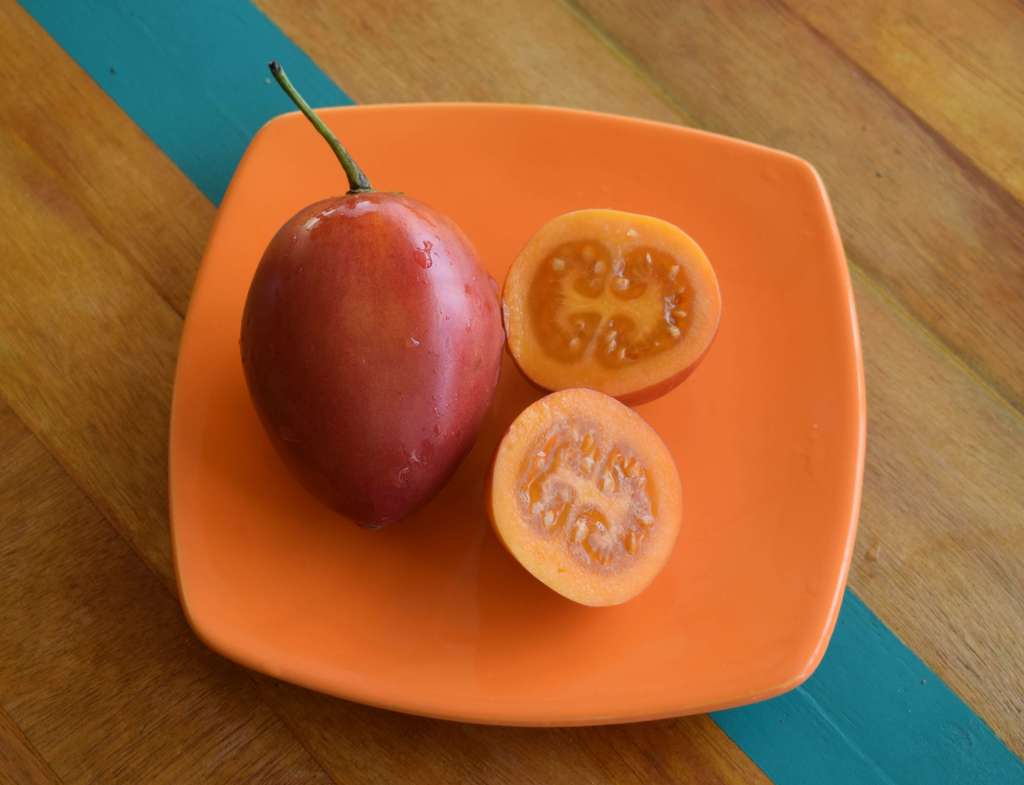
Babaco
Babaco is a large fruit, similar in size to, and family of Papaya. The taste is like a mix of pineapple, papaya and citrus. It’s very juicy and you can turn it into a smoothie with the help of a blender. Babaco is one of those fruits that are popular in Ecuador, and only in Ecuador. The price is reasonably cheap for a fruit this size. Inside, scoop out and throw away the foamy, tasteless, white part first. Then eat the rest of the sweet flesh clinging to the skin, e.g. by scooping it out.

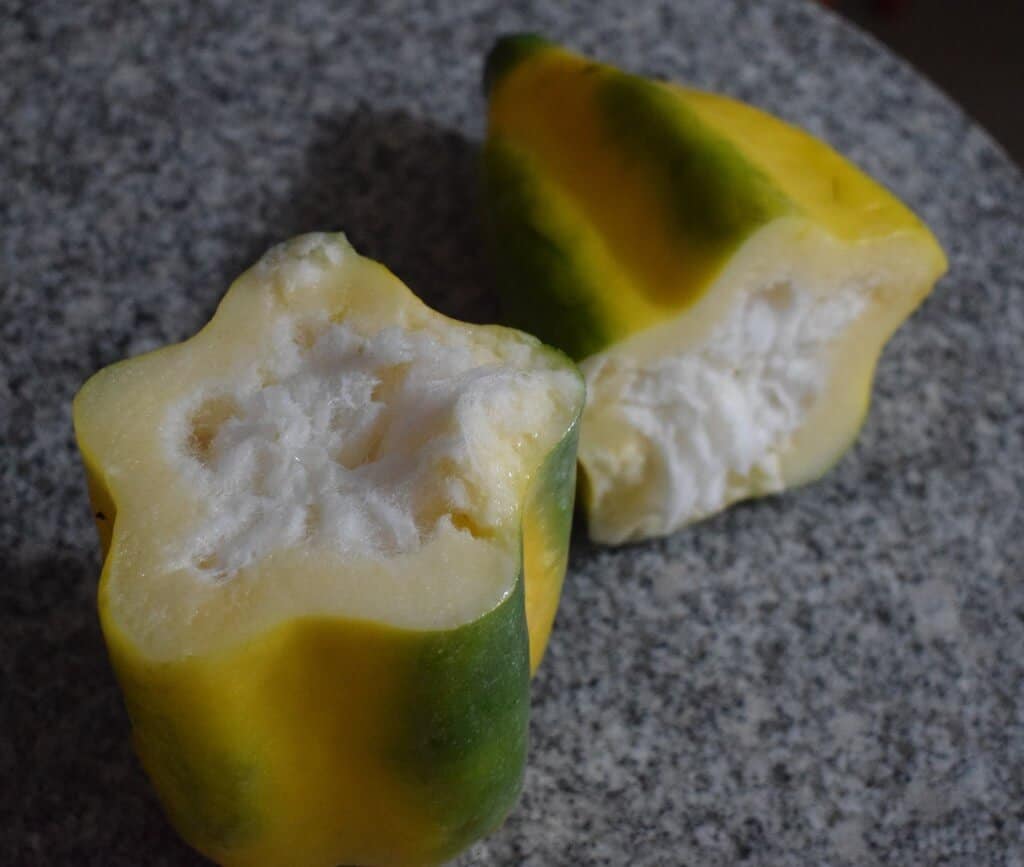
Guanabana
Guanabana is quite hard to eat because you have to avoid swallowing the black seeds – which contains a small amount of poison. The creamy white flesh tastes delicious though (also goes well with smoothies). Make sure your Guanabana is not too green or hard on the outside because it’ll take a while to ripen. It’s quite expensive if it’s ripe – easily $5 to $7 per fruit. This is probably because the soft ripe fruit can bruise very easily. Apart from the fruit, Guanabana leaves are also consumed as a tea – due to potential health benefits.
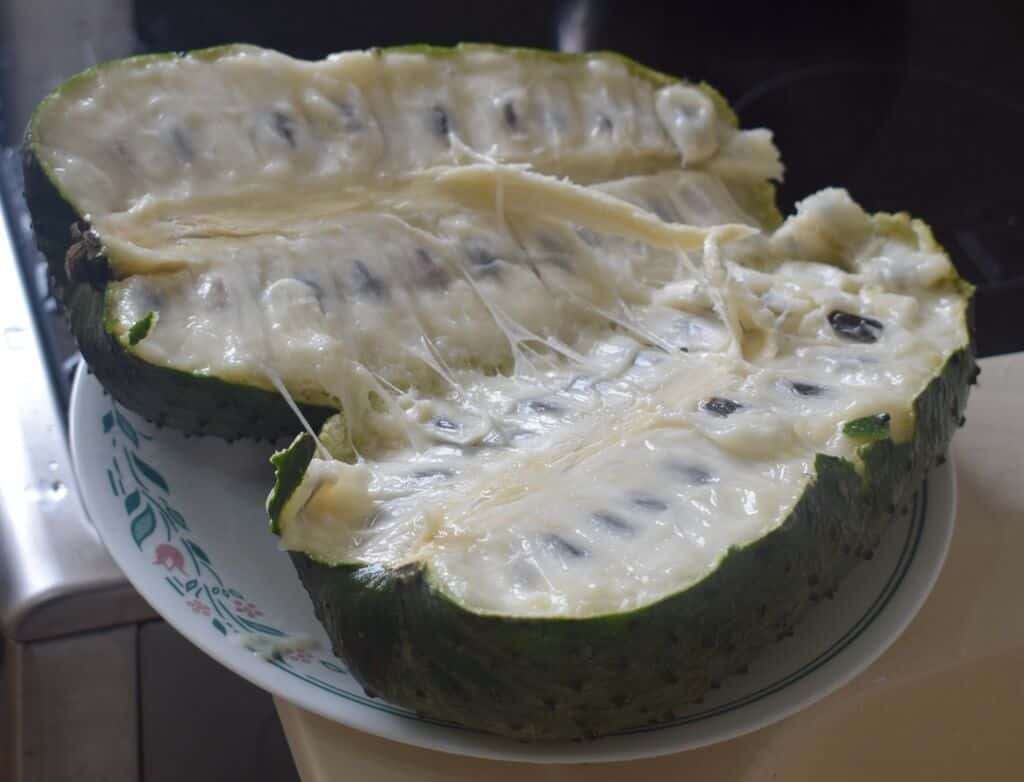
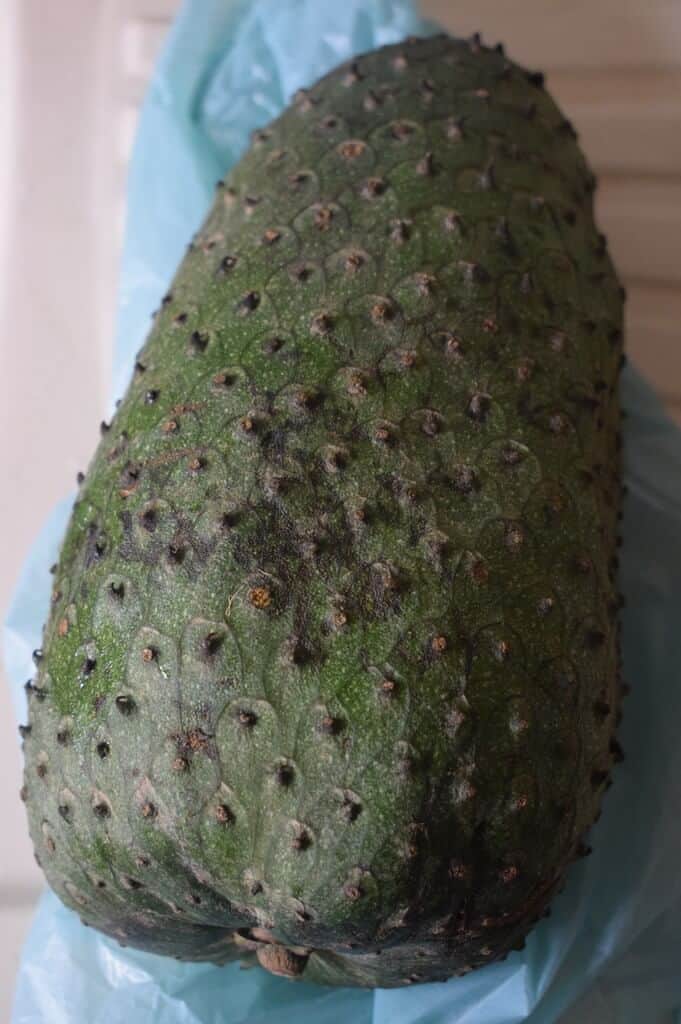
Sapote
Sapote can have a pleasant creamy texture. It’s like a cross of lucuma and peach, with some relation to mango as well. Moreover, the taste and texture remind of a sweeter, juicier and creamier version of a pumpkin. There are 4 or 5 large seeds within – simply eat the orange flesh around the seeds.
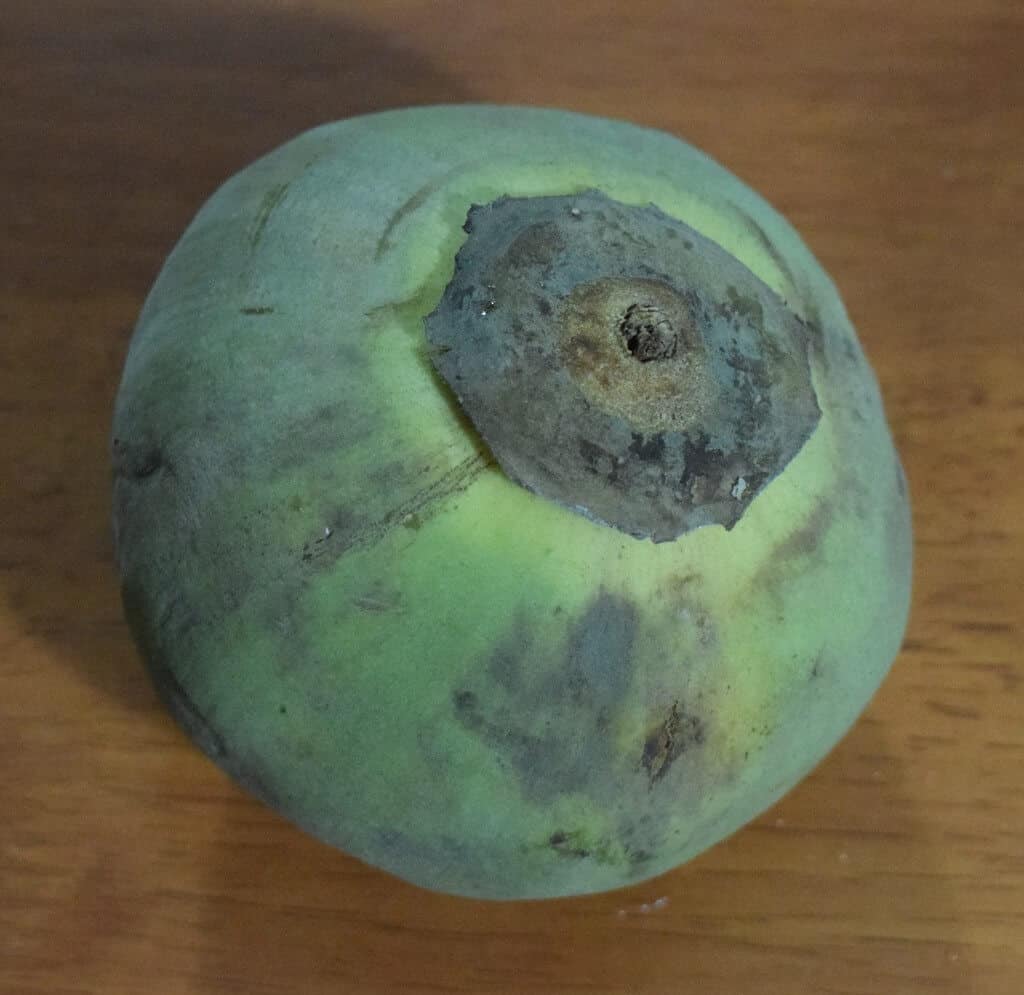
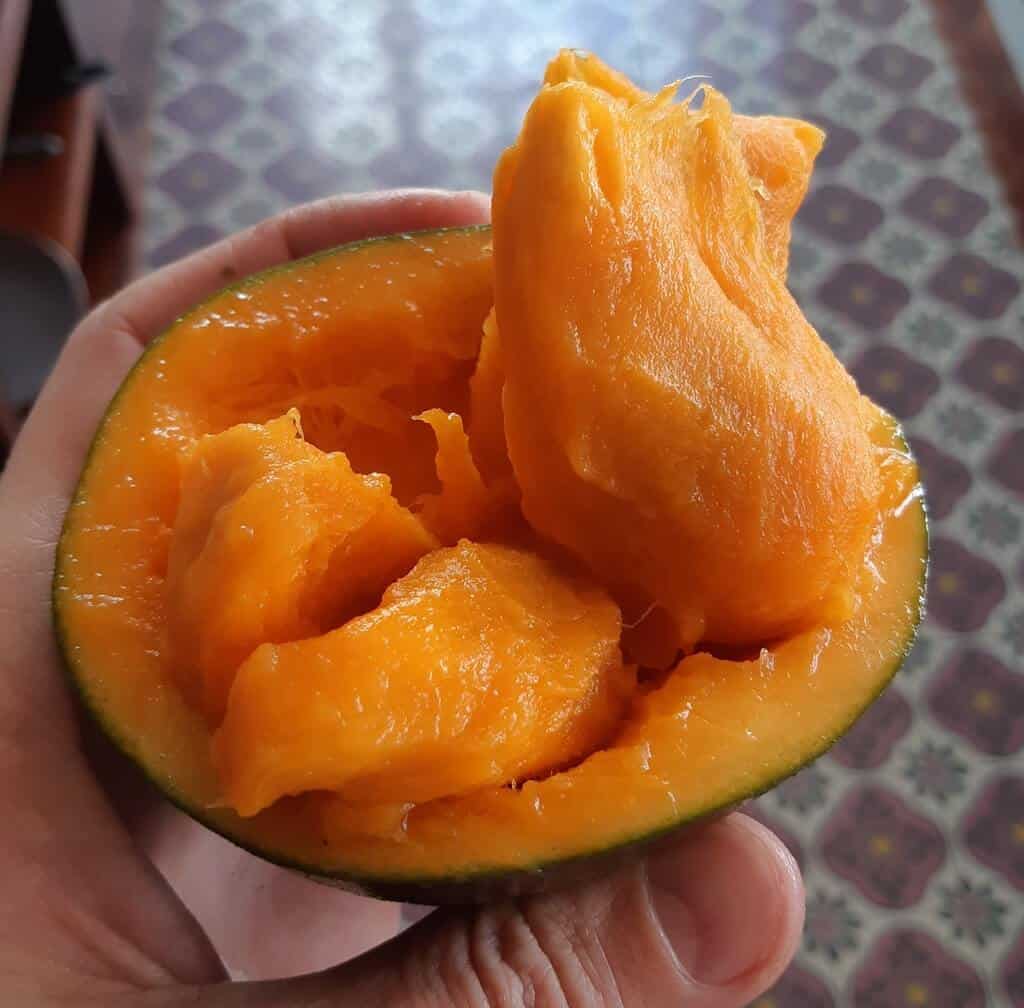
Mamey
Mamey is a creamy sweet fruit, like a soft-smooth-firm Peach with toned down taste. Strangely, the flesh both tastes and looks much like Papaya (although the skin is very different from Papaya). Yet, it’s denser than Papaya. Mamey scoops like ice cream. The flesh also has a slight taste resemblance to the Peruvian Lucuma fruit.
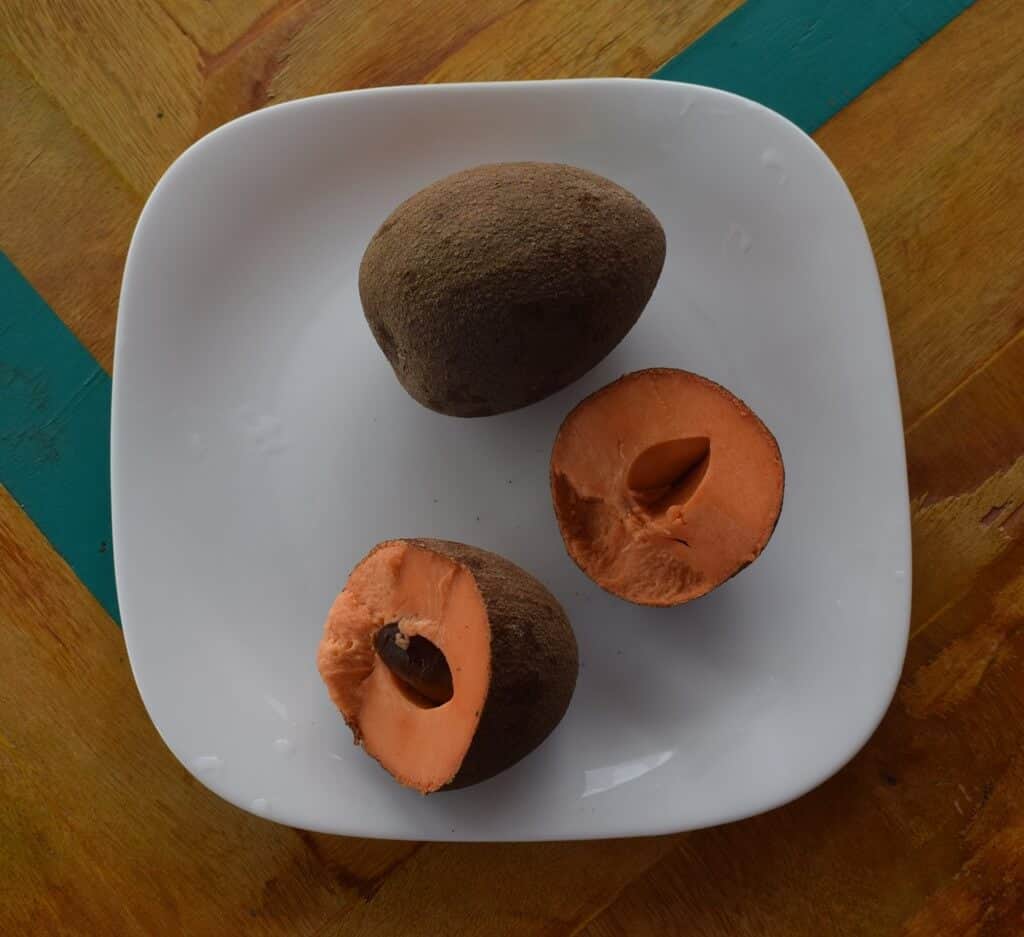
Naranjilla
Somewhat bitter, somewhat sweet, a perfect mixture of bitter and sweet. Naranjilla is not really eaten as a fruit but rather turned into a juice or smoothie. Or used to flavor other drinks, as demonstrated below where I’m using Naranjilla to give a bitter-sweet citrus taste to yerba mate tea. With its taste profile, you could place it as somewhere between an orange and lemon.
Noni
Aged cheese and pepper seems to be a fitting description for this quaint fruit. It’s supposed to be extremely healthy, high in anti-oxidants, but the taste is not for everyone. At the market, it’s not always easy to find Noni at the right stage of ripeness. And it can be expensive.
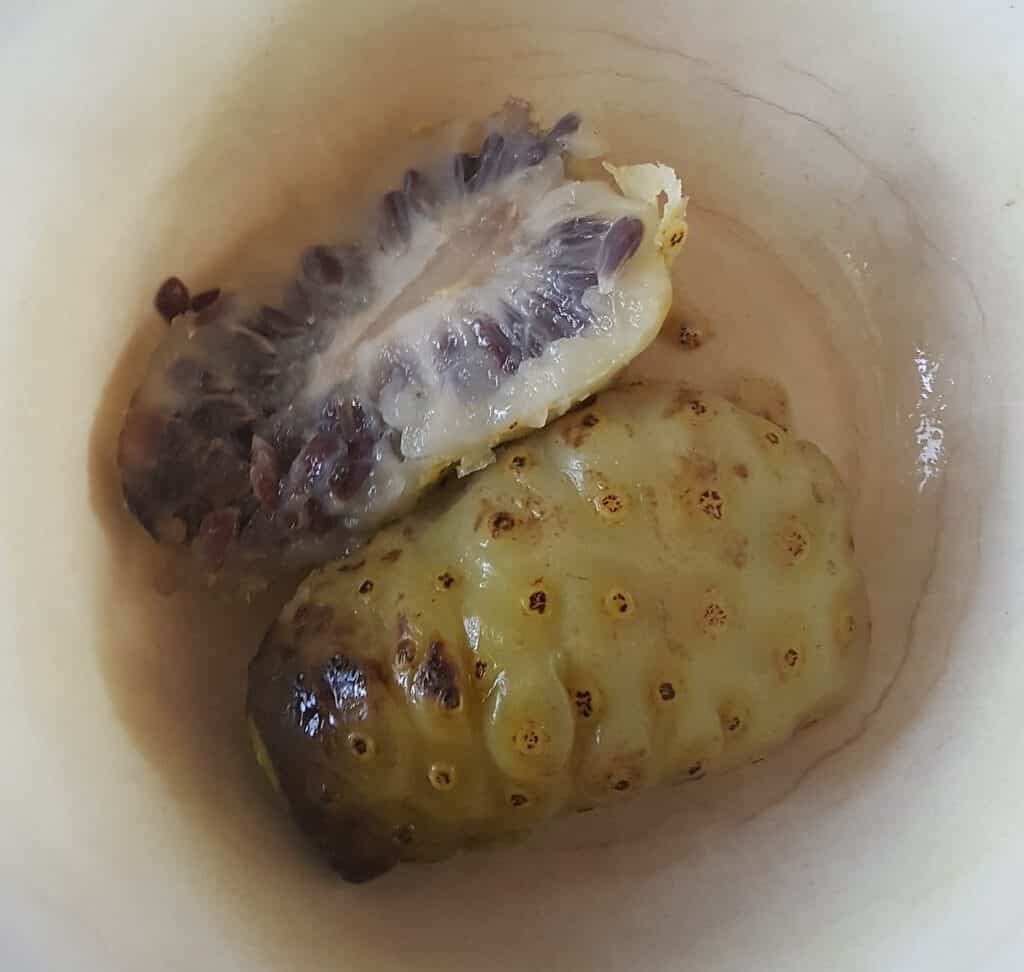
Chirimoya
Chirimoya is like a small Guanabana. Since it’s smaller it’s less expensive. Plus, the flesh is a little less smooth, creamy and white than Guanabana. Also, it’s slightly more fibrous, and juicy instead of creamy. It reminds somewhat of pear juice. The flesh comes off the seeds easier. As with Guanabana, don’t eat the seeds.
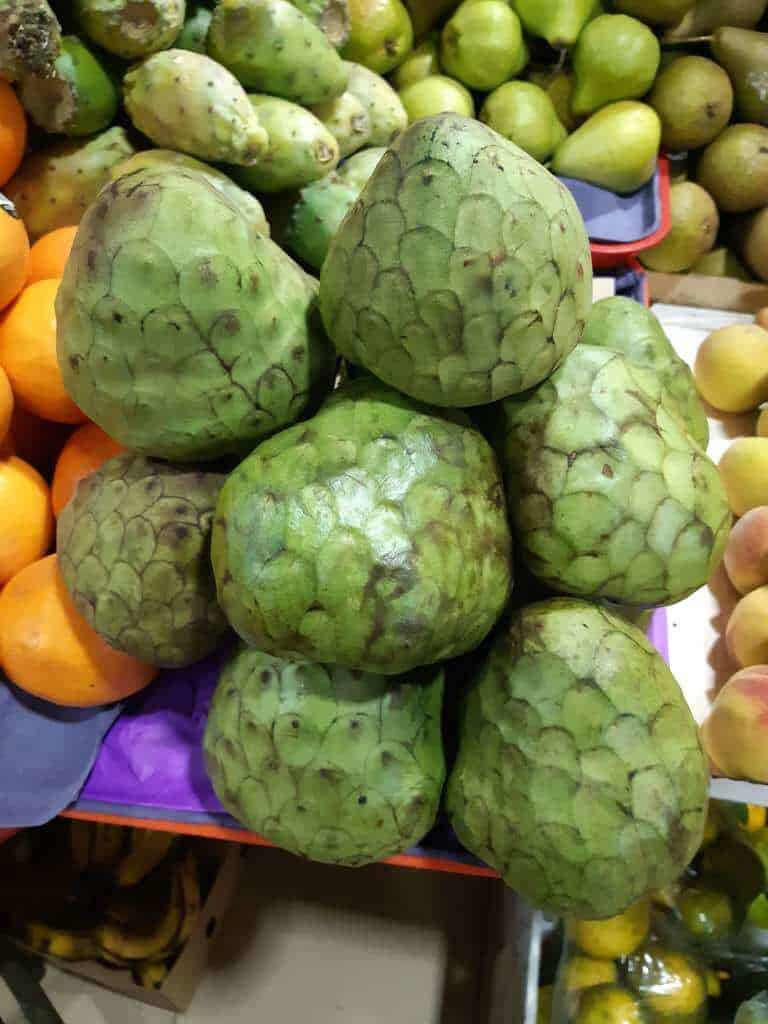
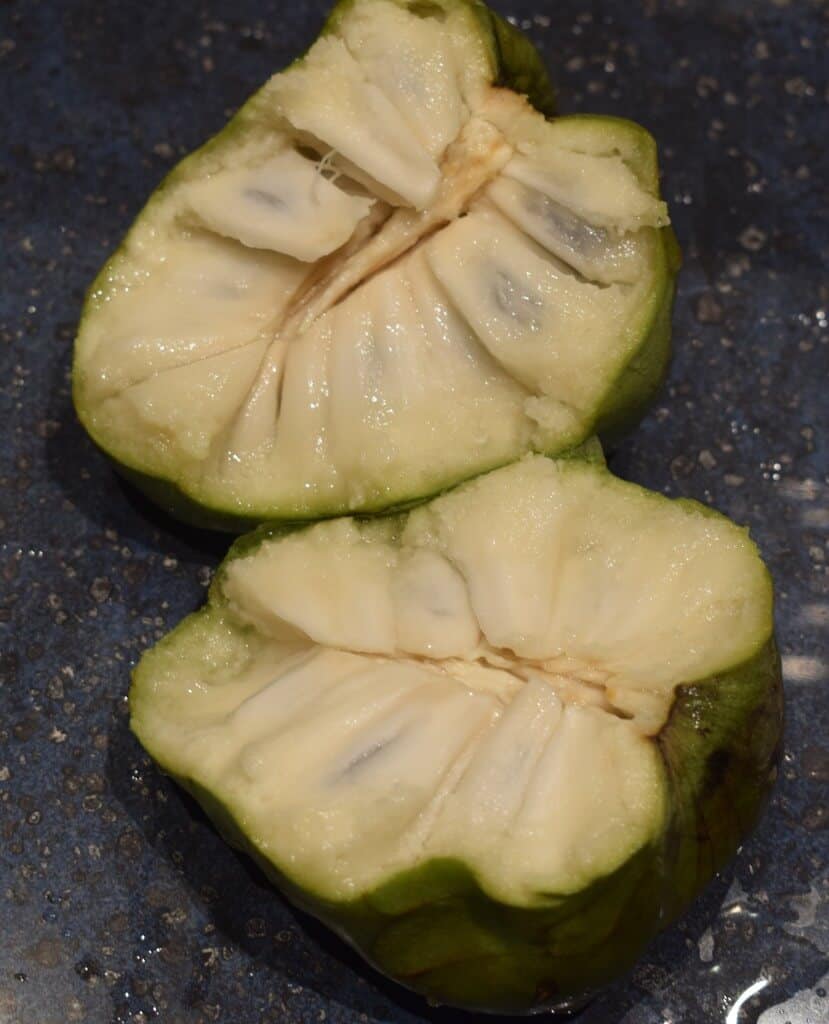
Cacau fruit
Cacau fruit is the source of chocolate. It has a tasty white creamy sweet flesh around the seeds. It’s not something you could simply pop in your mouth, chew and swallow. You have to carefully chew away the flesh from the seeds. This may explain why the dried purple-brown Cacau beans are much more popular than the surrounding white flesh covering the beans. Scroll the Instagram pics below to get a better idea.
View this post on Instagram
Check out Amazon for an up-to-date price on quality organic whole dried Cacau beans.
It’s a straight-forward process to make chocolate with dried cacau beans. The dry beans get roasted, tempered, and moulded into real dark chocolate.
Mangosteen
Mangosteen is a popular exotic fruit with sweet, white-flesh covered seeds inside. It’s widely consumed in Asian countries like Thailand – but it’s harder to find in Ecuador at a decent price. The protective shell breaks open easily with some pressure from the fingers. Although there’s a small seed in each white flesh segment, it’s simple enough to eat, and it tastes pretty good.
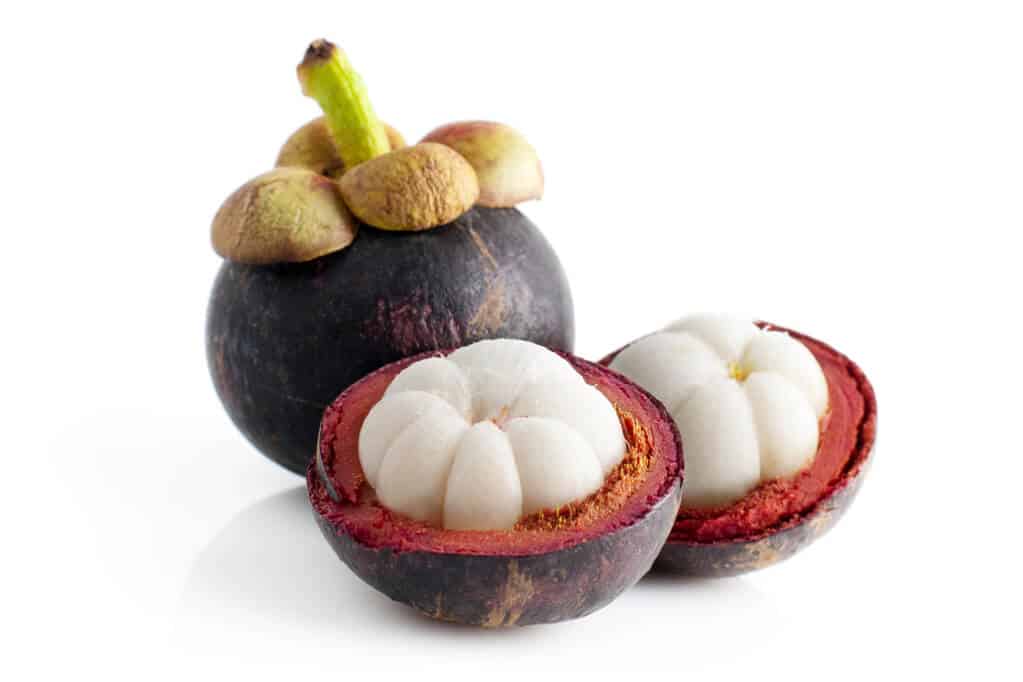
Dragonfruit / Pitahaya
The local dragonfruit variety is a little less sweet than what you find in other countries. Still, it’s a refreshing and quick snack, especially if you’re getting tired of Ecuador’s bananas. Pitahaya is easy to peal after cutting in half. You’ll notice the white flesh enveloping the black seeds in the jelly-like flesh. It has a good nutrient profile of fiber, minerals and vitamins.

Mora Berries
Mora berries resemble Blackberries, but has more red color tones. Moreover, Blackberries are much sweeter, and better tasting than Mora, which is only slightly sweet. You can eat it raw, but it’s mostly used to make Mora smoothies or jam.
These berries squash very easily, and it doesn’t stay intact as much as blackberries. But since you’ll probably make a smoothie with this, it doesn’t matter that much if it gets squashed on the way home. At least it’s much less expensive than Blackberries.
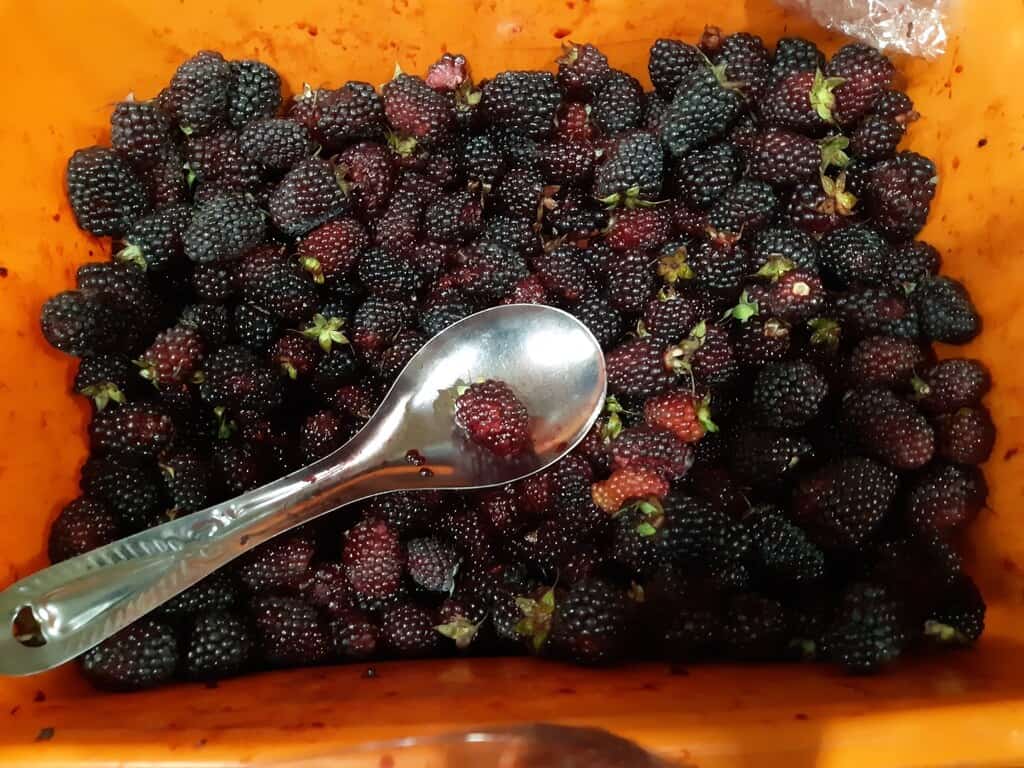
Pepino
Apart from Ecuador, Pepino is also widely consumed in cities like Lima (Peru). Pepino is very affordable. It tastes somewhat like an apple- or melon-cucumber. It’s not that sweet – which means that it’s quite low in calories (along with other health benefits e.g. anti-oxidants and vitamins). There were no seeds inside, although some varieties do contain seed. It’s also known as “Pepino Melon”, but is not really family of Melon fruits. It’s actually more related to tomato, sweet peppers and eggplant – the nightshade plants.
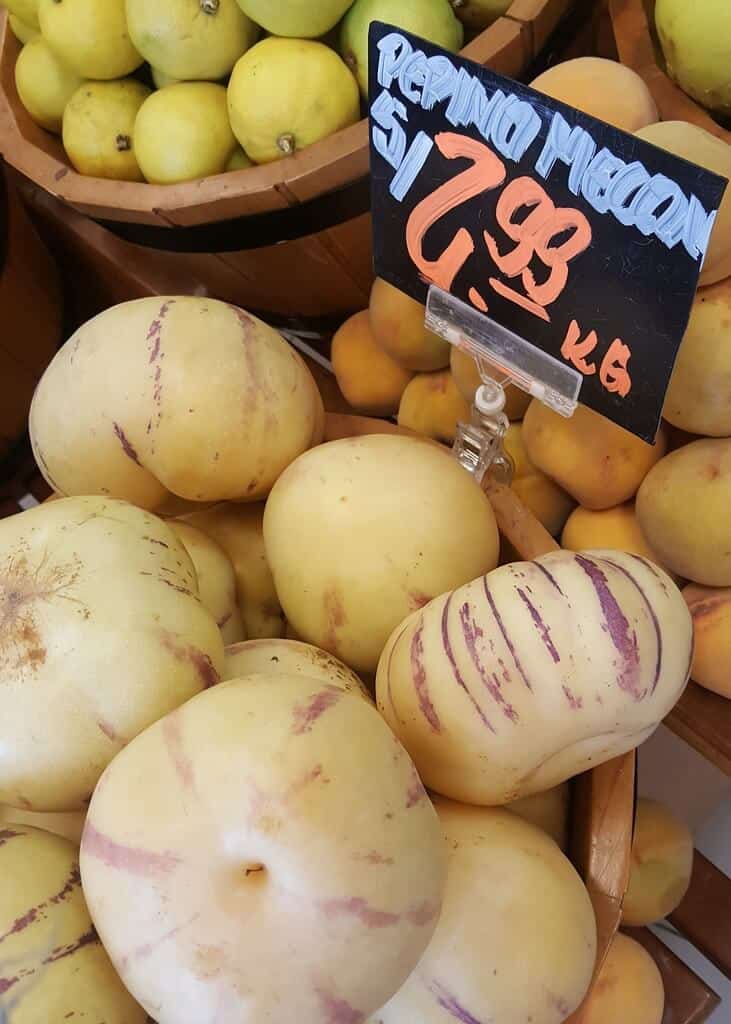

Tuna fruit
Tuna fruit is known as Prickly pear in other countries. It’s a unique fruit, growing in dry environments on Cacti. There are little, almost invisible thorns on the sides, thus be careful while handling. And don’t eat the green skin. Inside you find the black medium-sized seeds – you can swallow the seeds. It’s decently sweet and quite fibrous – worth trying. You’re more likely to find it in Cuenca than elsewhere in Ecuador.
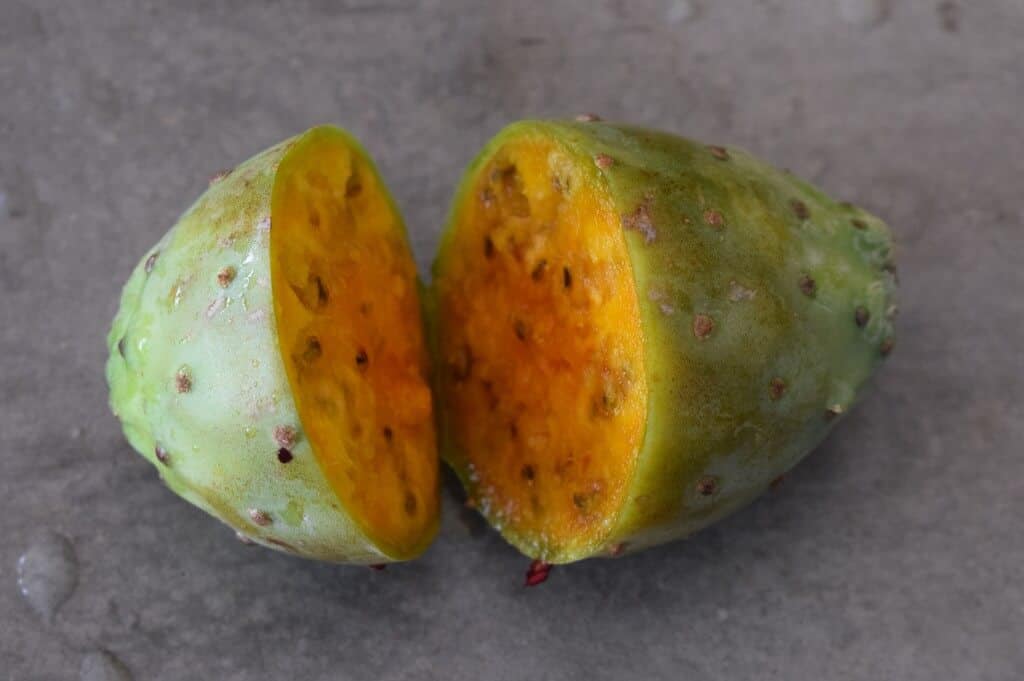
Other “Exotic Fruits”
A few fruits that didn’t make this post includes Granadilla / Passion fruit, which I don’t see as very exotic. Nowadays, in most countries, it’s as easy to find as Bananas, Oranges, and Apples. Another one is Guava – the yellow-green fruit, with sweet pink flesh on the inside – a mainstream fruit which I already mentioned in my Cape Town fruit guide.
Next, Plantain (the large green banana) didn’t make this post since it’s consumed more as a vegetable than fruit in Ecuador. Coconuts are also grown along the coast (easy to find in coastal towns like Montanita) – you can read about Coconut water here.
Moreover, Ecuador has plenty of interesting tea herbs e.g. Guayusa, Coca Leaves, Amazonian Cinnamon, or Hibiscus (“Flor de Jamaica”). But we’ll discuss these another time.
Where to buy Ecuadorian Exotic Fruit?
Within the large Ecuadorian cities, you’ll have no problems finding most of these exotic fruits. But in the smaller cities, expect much less variety.
In Quito, a great place to buy exotic fruit is at the Santa Clara Market. Inaquito Market is also a very decent market. While the Central Market is another tiny option, but it’s in a more dangerous neighborhood. With regards to other touristic cities, the Baños market didn’t have much variety. Cuenca, the third largest city in Ecuador, had plenty of exotic fruits – but not exactly as much variety as Quito. Guayaquil, Ecuador’s largest city, had mediocre variety – it’s a coastal city known more for fishing than fruit.
The Galapagos islands marine reserve is the hardest part of Ecuador to find exotic fruit. Cultivation of exotic fruit is forbidden by the local authorities, since it may damage the ecology of the islands. One such fruit that already did a lot of damage on Galapagos is the Ecuadorian Blackberry (“Mora”) plant.
As a general rule of thumb, buying directly at the fresh produce markets is usually cheaper than supermarkets and grocery stores. At these markets you could even try some price negotiation with the sellers.
Have you tried any of these Ecuadorian Fruits? Is there any other exotic fruit you’d recommend? Comment below your questions or suggestions!

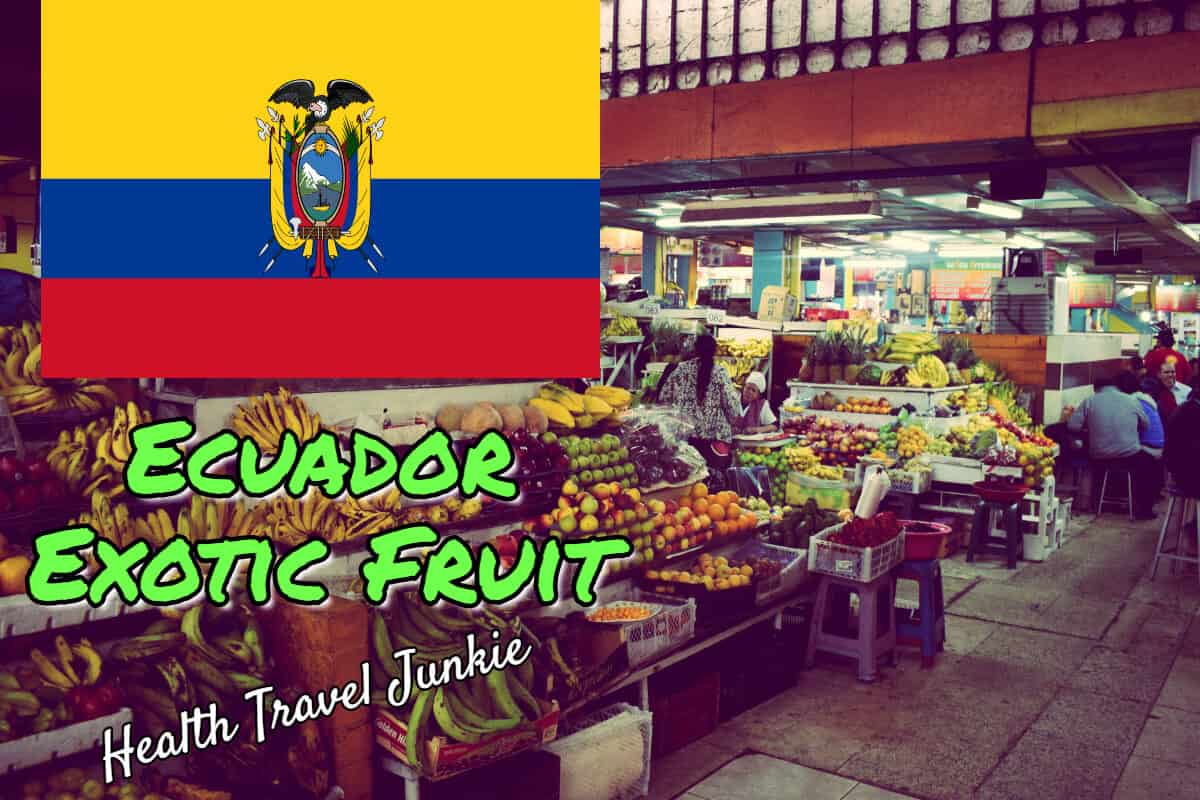

Were can I buy Guava, Zapote and nisperos.
Hi. You should find all 3 of those in Quito – especially at the markets mentioned above, plus the large supermarkets, perhaps e.g. MegaMaxi (?), at their fresh fruit sections.